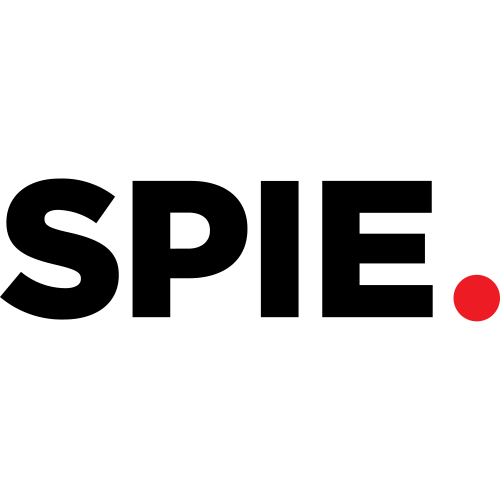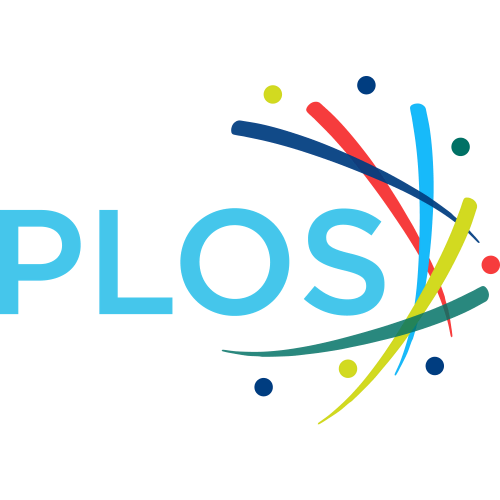Accounts of Chemical Research, volume 49, issue 9, pages 1722-1730
Fluorescent Biosensors Based on Single-Molecule Counting.
Publication type: Journal Article
Publication date: 2016-09-01
Journal:
Accounts of Chemical Research
Quartile SCImago
Q1
Quartile WOS
Q1
Impact factor: 18.3
ISSN: 00014842, 15204898
General Chemistry
General Medicine
Abstract
Biosensors for highly sensitive, selective, and rapid quantification of specific biomolecules make great contributions to biomedical research, especially molecular diagnostics. However, conventional methods for biomolecular assays often suffer from insufficient sensitivity and poor specificity. In some case (e.g., early disease diagnostics), the concentration of target biomolecules is too low to be detected by these routine approaches, and cumbersome procedures are needed to improve the detection sensitivity. Therefore, there is an urgent need for rapid and ultrasensitive analytical tools. In this respect, single-molecule fluorescence approaches may well satisfy the requirement and hold promising potential for the development of ultrasensitive biosensors. Encouragingly, owing to the advances in single-molecule microscopy and spectroscopy over past decades, the detection of single fluorescent molecule comes true, greatly boosting the development of highly sensitive biosensors. By in vitro/in vivo labeling of target biomolecules with proper fluorescent tags, the quantification of certain biomolecule at the single-molecule level is achieved. In comparison with conventional ensemble measurements, single-molecule detection-based analytical methods possess the advantages of ultrahigh sensitivity, good selectivity, rapid analysis time, and low sample consumption. Consequently, single-molecule detection may be potentially employed as an ideal analytical approach to quantify low-abundant biomolecules with rapidity and simplicity. In this Account, we will summarize our efforts for developing a series of ultrasensitive biosensors based on single-molecule counting. Single-molecule counting is a member of single-molecule detection technologies and may be used as a very simple and ultrasensitive method to quantify target molecules by simply counting the individual fluorescent bursts. In the fluorescent sensors, the signals of target biomolecules may be translated to the fluorescence signals by specific in vitro/in vivo fluorescent labeling, and consequently, the fluorescent molecules indicate the presence of target molecules. The resultant fluorescence signals may be simply counted by either microfluidic device-integrated confocal microscopy or total internal reflection fluorescence-based single-molecule imaging. We have developed a series of single-molecule counting-based biosensors which can be classified as separation-free and separation-assisted assays. As a proof-of-concept, we demonstrate the applications of single-molecule counting-based biosensors for sensitive detection of various target biomolecules such as DNAs, miRNAs, proteins, enzymes, and intact cells, which may function as the disease-related biomarkers. Moreover, we give a summary of future directions to expand the usability of single-molecule counting-based biosensors including (1) the development of more user-friendly and automated instruments, (2) the discovery of new fluorescent labels and labeling strategies, and (3) the introduction of new concepts for the design of novel biosensors. Due to their high sensitivity, good selectivity, rapidity, and simplicity, we believe that the single-molecule counting-based fluorescent biosensors will indubitably find wide applications in biological research, clinical diagnostics, and drug discovery.
Top-30
Citations by journals
|
5
10
15
20
25
30
|
|
|
Analytical Chemistry
29 publications, 12.83%
|
|
|
Chemical Communications
19 publications, 8.41%
|
|
|
TrAC - Trends in Analytical Chemistry
13 publications, 5.75%
|
|
|
Biosensors and Bioelectronics
10 publications, 4.42%
|
|
|
Analytica Chimica Acta
10 publications, 4.42%
|
|
|
Sensors and Actuators, B: Chemical
9 publications, 3.98%
|
|
|
Chemical Science
9 publications, 3.98%
|
|
|
ACS Sensors
7 publications, 3.1%
|
|
|
Journal of Materials Chemistry B
6 publications, 2.65%
|
|
|
Biosensors
5 publications, 2.21%
|
|
|
Talanta
5 publications, 2.21%
|
|
|
The Analyst
5 publications, 2.21%
|
|
|
ACS applied materials & interfaces
3 publications, 1.33%
|
|
|
Nano Letters
3 publications, 1.33%
|
|
|
ACS Nano
3 publications, 1.33%
|
|
|
Nanoscale
3 publications, 1.33%
|
|
|
Nature Communications
2 publications, 0.88%
|
|
|
Science China Chemistry
2 publications, 0.88%
|
|
|
Journal of Physical Chemistry C
2 publications, 0.88%
|
|
|
Coordination Chemistry Reviews
2 publications, 0.88%
|
|
|
Spectrochimica Acta - Part A: Molecular and Biomolecular Spectroscopy
2 publications, 0.88%
|
|
|
Luminescence
2 publications, 0.88%
|
|
|
Bioconjugate Chemistry
2 publications, 0.88%
|
|
|
Analytical Methods
2 publications, 0.88%
|
|
|
Chemical Engineering Journal
2 publications, 0.88%
|
|
|
Optical Materials Express
1 publication, 0.44%
|
|
|
Journal of Nanophotonics
1 publication, 0.44%
|
|
|
Acta Chimica Sinica
1 publication, 0.44%
|
|
|
Toxins
1 publication, 0.44%
|
|
|
5
10
15
20
25
30
|
Citations by publishers
|
10
20
30
40
50
60
70
|
|
|
Elsevier
63 publications, 27.88%
|
|
|
American Chemical Society (ACS)
57 publications, 25.22%
|
|
|
Royal Society of Chemistry (RSC)
49 publications, 21.68%
|
|
|
Wiley
17 publications, 7.52%
|
|
|
Springer Nature
11 publications, 4.87%
|
|
|
Multidisciplinary Digital Publishing Institute (MDPI)
9 publications, 3.98%
|
|
|
IOP Publishing
2 publications, 0.88%
|
|
|
Cold Spring Harbor Laboratory
2 publications, 0.88%
|
|
|
Optical Society of America
1 publication, 0.44%
|
|
|
SPIE
1 publication, 0.44%
|
|
|
Shanghai Institute of Organic Chemistry
1 publication, 0.44%
|
|
|
Frontiers Media S.A.
1 publication, 0.44%
|
|
|
Public Library of Science (PLoS)
1 publication, 0.44%
|
|
|
KeAi Communications Co.
1 publication, 0.44%
|
|
|
Pleiades Publishing
1 publication, 0.44%
|
|
|
Taylor & Francis
1 publication, 0.44%
|
|
|
IEEE
1 publication, 0.44%
|
|
|
Oxford University Press
1 publication, 0.44%
|
|
|
Annual Reviews
1 publication, 0.44%
|
|
|
IGI Global
1 publication, 0.44%
|
|
|
Autonomous Non-profit Organization Editorial Board of the journal Uspekhi Khimii
1 publication, 0.44%
|
|
|
Thieme
1 publication, 0.44%
|
|
|
10
20
30
40
50
60
70
|
- We do not take into account publications without a DOI.
- Statistics recalculated only for publications connected to researchers, organizations and labs registered on the platform.
- Statistics recalculated weekly.
{"yearsCitations":{"type":"bar","data":{"show":true,"labels":[2017,2018,2019,2020,2021,2022,2023,2024],"ids":[0,0,0,0,0,0,0,0],"codes":[0,0,0,0,0,0,0,0],"imageUrls":["","","","","","","",""],"datasets":[{"label":"Citations number","data":[34,34,24,29,27,23,34,21],"backgroundColor":["#3B82F6","#3B82F6","#3B82F6","#3B82F6","#3B82F6","#3B82F6","#3B82F6","#3B82F6"],"percentage":["15.04","15.04","10.62","12.83","11.95","10.18","15.04","9.29"],"barThickness":null}]},"options":{"indexAxis":"x","maintainAspectRatio":true,"scales":{"y":{"ticks":{"precision":0,"autoSkip":false,"font":{"family":"Montserrat"},"color":"#000000"},"stacked":false},"x":{"ticks":{"stepSize":1,"precision":0,"font":{"family":"Montserrat"},"color":"#000000"},"stacked":false}},"plugins":{"legend":{"position":"top","labels":{"font":{"family":"Montserrat"},"color":"#000000"}},"title":{"display":true,"text":"Citations per year","font":{"size":24,"family":"Montserrat","weight":600},"color":"#000000"}}}},"journals":{"type":"bar","data":{"show":true,"labels":["Analytical Chemistry","Chemical Communications","TrAC - Trends in Analytical Chemistry","Biosensors and Bioelectronics","Analytica Chimica Acta","Sensors and Actuators, B: Chemical","Chemical Science","ACS Sensors","Journal of Materials Chemistry B","Biosensors","Talanta","The Analyst","ACS applied materials & interfaces","Nano Letters","ACS Nano","Nanoscale","Nature Communications","Science China Chemistry","Journal of Physical Chemistry C","Coordination Chemistry Reviews","Spectrochimica Acta - Part A: Molecular and Biomolecular Spectroscopy","Luminescence","Bioconjugate Chemistry","Analytical Methods","Chemical Engineering Journal","Optical Materials Express","Journal of Nanophotonics","Acta Chimica Sinica","Toxins"],"ids":[18157,9073,434,18799,19094,22419,9646,8271,11516,5233,4331,9343,1458,10312,8724,228,3231,14409,8859,13437,6337,11836,4795,15295,16275,9132,10711,20619,1464],"codes":[0,0,0,0,0,0,0,0,0,0,0,0,0,0,0,0,0,0,0,0,0,0,0,0,0,0,0,0,0],"imageUrls":["\/storage\/images\/resized\/iLiQsFqFaSEx6chlGQ5fbAwF6VYU3WWa08hkss0g_medium.webp","\/storage\/images\/resized\/leiAYcRDGTSl5B1eCnwpSGqmDEUEfDPPoYisFGhT_medium.webp","\/storage\/images\/resized\/GDnYOu1UpMMfMMRV6Aqle4H0YLLsraeD9IP9qScG_medium.webp","\/storage\/images\/resized\/GDnYOu1UpMMfMMRV6Aqle4H0YLLsraeD9IP9qScG_medium.webp","\/storage\/images\/resized\/GDnYOu1UpMMfMMRV6Aqle4H0YLLsraeD9IP9qScG_medium.webp","\/storage\/images\/resized\/GDnYOu1UpMMfMMRV6Aqle4H0YLLsraeD9IP9qScG_medium.webp","\/storage\/images\/resized\/leiAYcRDGTSl5B1eCnwpSGqmDEUEfDPPoYisFGhT_medium.webp","\/storage\/images\/resized\/iLiQsFqFaSEx6chlGQ5fbAwF6VYU3WWa08hkss0g_medium.webp","\/storage\/images\/resized\/leiAYcRDGTSl5B1eCnwpSGqmDEUEfDPPoYisFGhT_medium.webp","\/storage\/images\/resized\/MjH1ITP7lMYGxeqUZfkt2BnVLgjkk413jwBV97XX_medium.webp","\/storage\/images\/resized\/GDnYOu1UpMMfMMRV6Aqle4H0YLLsraeD9IP9qScG_medium.webp","\/storage\/images\/resized\/leiAYcRDGTSl5B1eCnwpSGqmDEUEfDPPoYisFGhT_medium.webp","\/storage\/images\/resized\/iLiQsFqFaSEx6chlGQ5fbAwF6VYU3WWa08hkss0g_medium.webp","\/storage\/images\/resized\/iLiQsFqFaSEx6chlGQ5fbAwF6VYU3WWa08hkss0g_medium.webp","\/storage\/images\/resized\/iLiQsFqFaSEx6chlGQ5fbAwF6VYU3WWa08hkss0g_medium.webp","\/storage\/images\/resized\/leiAYcRDGTSl5B1eCnwpSGqmDEUEfDPPoYisFGhT_medium.webp","\/storage\/images\/resized\/voXLqlsvTwv5p3iMQ8Dhs95nqB4AXOG7Taj7G4ra_medium.webp","\/storage\/images\/resized\/voXLqlsvTwv5p3iMQ8Dhs95nqB4AXOG7Taj7G4ra_medium.webp","\/storage\/images\/resized\/iLiQsFqFaSEx6chlGQ5fbAwF6VYU3WWa08hkss0g_medium.webp","\/storage\/images\/resized\/GDnYOu1UpMMfMMRV6Aqle4H0YLLsraeD9IP9qScG_medium.webp","\/storage\/images\/resized\/GDnYOu1UpMMfMMRV6Aqle4H0YLLsraeD9IP9qScG_medium.webp","\/storage\/images\/resized\/bRyGpdm98BkAUYiK1YFNpl5Z7hPu6Gd87gbIeuG3_medium.webp","\/storage\/images\/resized\/iLiQsFqFaSEx6chlGQ5fbAwF6VYU3WWa08hkss0g_medium.webp","\/storage\/images\/resized\/leiAYcRDGTSl5B1eCnwpSGqmDEUEfDPPoYisFGhT_medium.webp","\/storage\/images\/resized\/GDnYOu1UpMMfMMRV6Aqle4H0YLLsraeD9IP9qScG_medium.webp","\/storage\/images\/resized\/bypZPcr6C4twKiQVCUCGc0GF4cH6aUWmpClD3hsH_medium.webp","\/storage\/images\/resized\/DBpVkewJngs3BK2gVqHayOcCZf2Czbxddw6ObU26_medium.webp","\/storage\/images\/resized\/6EJSsoiR4fNMNMPFBpMh5yKuYKcPXJDQKvKVeEMy_medium.webp","\/storage\/images\/resized\/MjH1ITP7lMYGxeqUZfkt2BnVLgjkk413jwBV97XX_medium.webp"],"datasets":[{"label":"","data":[29,19,13,10,10,9,9,7,6,5,5,5,3,3,3,3,2,2,2,2,2,2,2,2,2,1,1,1,1],"backgroundColor":["#3B82F6","#3B82F6","#3B82F6","#3B82F6","#3B82F6","#3B82F6","#3B82F6","#3B82F6","#3B82F6","#3B82F6","#3B82F6","#3B82F6","#3B82F6","#3B82F6","#3B82F6","#3B82F6","#3B82F6","#3B82F6","#3B82F6","#3B82F6","#3B82F6","#3B82F6","#3B82F6","#3B82F6","#3B82F6","#3B82F6","#3B82F6","#3B82F6","#3B82F6"],"percentage":[12.83,8.41,5.75,4.42,4.42,3.98,3.98,3.1,2.65,2.21,2.21,2.21,1.33,1.33,1.33,1.33,0.88,0.88,0.88,0.88,0.88,0.88,0.88,0.88,0.88,0.44,0.44,0.44,0.44],"barThickness":13}]},"options":{"indexAxis":"y","maintainAspectRatio":false,"scales":{"y":{"ticks":{"precision":0,"autoSkip":false,"font":{"family":"Montserrat"},"color":"#000000"},"stacked":false},"x":{"ticks":{"stepSize":null,"precision":0,"font":{"family":"Montserrat"},"color":"#000000"},"stacked":false}},"plugins":{"legend":{"position":"top","labels":{"font":{"family":"Montserrat"},"color":"#000000"}},"title":{"display":true,"text":"Journals","font":{"size":24,"family":"Montserrat","weight":600},"color":"#000000"}}}},"publishers":{"type":"bar","data":{"show":true,"labels":["Elsevier","American Chemical Society (ACS)","Royal Society of Chemistry (RSC)","Wiley","Springer Nature","Multidisciplinary Digital Publishing Institute (MDPI)","IOP Publishing","Cold Spring Harbor Laboratory","Optical Society of America","SPIE","Shanghai Institute of Organic Chemistry","Frontiers Media S.A.","Public Library of Science (PLoS)","KeAi Communications Co.","Pleiades Publishing","Taylor & Francis","IEEE","Oxford University Press","Annual Reviews","IGI Global","Autonomous Non-profit Organization Editorial Board of the journal Uspekhi Khimii","Thieme"],"ids":[17,40,123,11,8,202,2075,6909,375,7162,8960,208,344,326,101,18,6953,19,6941,7845,9422,135],"codes":[0,0,0,0,0,0,0,0,0,0,0,0,0,0,0,0,0,0,0,0,0,0],"imageUrls":["\/storage\/images\/resized\/GDnYOu1UpMMfMMRV6Aqle4H0YLLsraeD9IP9qScG_medium.webp","\/storage\/images\/resized\/iLiQsFqFaSEx6chlGQ5fbAwF6VYU3WWa08hkss0g_medium.webp","\/storage\/images\/resized\/leiAYcRDGTSl5B1eCnwpSGqmDEUEfDPPoYisFGhT_medium.webp","\/storage\/images\/resized\/bRyGpdm98BkAUYiK1YFNpl5Z7hPu6Gd87gbIeuG3_medium.webp","\/storage\/images\/resized\/voXLqlsvTwv5p3iMQ8Dhs95nqB4AXOG7Taj7G4ra_medium.webp","\/storage\/images\/resized\/MjH1ITP7lMYGxeqUZfkt2BnVLgjkk413jwBV97XX_medium.webp","\/storage\/images\/resized\/LsKy6OnmmmRGcAU6CZgWQvNiP1polbaSLNrN7zqj_medium.webp","\/storage\/images\/resized\/hg4jJjT8wVGtHstBCc0zk465Mg9pLx3G4odCDOqE_medium.webp","\/storage\/images\/resized\/bypZPcr6C4twKiQVCUCGc0GF4cH6aUWmpClD3hsH_medium.webp","\/storage\/images\/resized\/DBpVkewJngs3BK2gVqHayOcCZf2Czbxddw6ObU26_medium.webp","\/storage\/images\/resized\/6EJSsoiR4fNMNMPFBpMh5yKuYKcPXJDQKvKVeEMy_medium.webp","\/storage\/images\/resized\/4QWA67eqfcfyOiA8Wk7YnqroHFqQbTsmDJUYTCTg_medium.webp","\/storage\/images\/resized\/PRGhlgB4OKRltSNtT39eA6wlnOTGRap1QQ6FQHih_medium.webp","\/storage\/images\/resized\/jeWDR7NTA9Ab5MVz8Uqjl2RPCndzFjSyl0FaRAHg_medium.webp","\/storage\/images\/resized\/oZgeErrVFhuDksyqFURLvYS1wtVSBWczh001igGo_medium.webp","\/storage\/images\/resized\/5YZtvLvkPZuc2JHOaZsjCvGSHFCuC3drUwN3YAc5_medium.webp","\/storage\/images\/resized\/6scCJegesojp2jubwY3uKCzTAmgsaH2GIFlg6Hfk_medium.webp","\/storage\/images\/resized\/yNSijlgQghQF53VZuyFLA30CKDe4j3HK74Vtpnxa_medium.webp","\/storage\/images\/resized\/A7oGMwx1m3fFJlKJvQUVra8h0itmEa7JZW0q3Q0b_medium.webp","\/storage\/images\/resized\/7FMNeB9SnnAZoNUlPrVuDf3sVkEkt74weJA9emBp_medium.webp","\/storage\/images\/resized\/9Mus3KG1Tkd7Bwaurt8H3RwWh0CxRlGoO6ng9UK1_medium.webp","\/storage\/images\/resized\/xqixcltwJYe6H8Uco2JbAFfIOzt7UNKH0OcPOPzO_medium.webp"],"datasets":[{"label":"","data":[63,57,49,17,11,9,2,2,1,1,1,1,1,1,1,1,1,1,1,1,1,1],"backgroundColor":["#3B82F6","#3B82F6","#3B82F6","#3B82F6","#3B82F6","#3B82F6","#3B82F6","#3B82F6","#3B82F6","#3B82F6","#3B82F6","#3B82F6","#3B82F6","#3B82F6","#3B82F6","#3B82F6","#3B82F6","#3B82F6","#3B82F6","#3B82F6","#3B82F6","#3B82F6"],"percentage":[27.88,25.22,21.68,7.52,4.87,3.98,0.88,0.88,0.44,0.44,0.44,0.44,0.44,0.44,0.44,0.44,0.44,0.44,0.44,0.44,0.44,0.44],"barThickness":13}]},"options":{"indexAxis":"y","maintainAspectRatio":false,"scales":{"y":{"ticks":{"precision":0,"autoSkip":false,"font":{"family":"Montserrat"},"color":"#000000"},"stacked":false},"x":{"ticks":{"stepSize":null,"precision":0,"font":{"family":"Montserrat"},"color":"#000000"},"stacked":false}},"plugins":{"legend":{"position":"top","labels":{"font":{"family":"Montserrat"},"color":"#000000"}},"title":{"display":true,"text":"Publishers","font":{"size":24,"family":"Montserrat","weight":600},"color":"#000000"}}}},"yearsCitationsQuartiles":{"type":"bar","data":{"show":true,"labels":[2017,2018,2019,2020,2021,2022,2023,2024],"ids":[],"codes":[],"imageUrls":[],"datasets":[{"label":"Q4","backgroundColor":"rgb(221,90,78)","data":[0,0,0,0,0,0,0,0],"percentage":["0","0","0","0","0","0","0","0"]},{"label":"Q3","backgroundColor":"rgb(251, 163,83)","data":[3,0,2,0,1,0,0,0],"percentage":["1.33","0","0.88","0","0.44","0","0","0"]},{"label":"Q2","backgroundColor":"rgb(232, 213, 89)","data":[6,5,2,3,1,5,1,0],"percentage":["2.65","2.21","0.88","1.33","0.44","2.21","0.44","0"]},{"label":"Q1","backgroundColor":"rgb(164, 207, 99)","data":[24,28,18,26,24,17,31,20],"percentage":["10.62","12.39","7.96","11.5","10.62","7.52","13.72","8.85"]},{"label":"Quartile not defined","backgroundColor":"#E5E7EB","data":[1,1,2,0,1,1,2,1],"percentage":["0.44","0.44","0.88","0","0.44","0.44","0.88","0.44"]}]},"options":{"indexAxis":"x","maintainAspectRatio":true,"scales":{"y":{"ticks":{"precision":0,"autoSkip":false,"font":{"family":"Montserrat"},"color":"#000000"},"stacked":true},"x":{"ticks":{"stepSize":1,"precision":0,"font":{"family":"Montserrat"},"color":"#000000"},"stacked":true}},"plugins":{"legend":{"position":"top","labels":{"font":{"family":"Montserrat"},"color":"#000000"}},"title":{"display":true,"text":"Citations quartiles by SCImago per year","font":{"size":24,"family":"Montserrat","weight":600},"color":"#000000"}}}},"yearsCitationsQuartilesWs":{"type":"bar","data":{"show":true,"labels":[2017,2018,2019,2020,2021,2022,2023,2024],"ids":[],"codes":[],"imageUrls":[],"datasets":[{"label":"Q4","backgroundColor":"rgb(221,90,78)","data":[2,0,0,0,0,0,0,0],"percentage":["0.88","0","0","0","0","0","0","0"]},{"label":"Q3","backgroundColor":"rgb(251, 163,83)","data":[3,1,1,1,2,0,0,0],"percentage":["1.33","0.44","0.44","0.44","0.88","0","0","0"]},{"label":"Q2","backgroundColor":"rgb(232, 213, 89)","data":[13,12,5,5,6,3,4,1],"percentage":["5.75","5.31","2.21","2.21","2.65","1.33","1.77","0.44"]},{"label":"Q1","backgroundColor":"rgb(164, 207, 99)","data":[14,20,16,23,18,19,27,19],"percentage":["6.19","8.85","7.08","10.18","7.96","8.41","11.95","8.41"]},{"label":"Quartile not defined","backgroundColor":"#E5E7EB","data":[2,1,2,0,1,1,3,1],"percentage":["0.88","0.44","0.88","0","0.44","0.44","1.33","0.44"]}]},"options":{"indexAxis":"x","maintainAspectRatio":true,"scales":{"y":{"ticks":{"precision":0,"autoSkip":false,"font":{"family":"Montserrat"},"color":"#000000"},"stacked":true},"x":{"ticks":{"stepSize":1,"precision":0,"font":{"family":"Montserrat"},"color":"#000000"},"stacked":true}},"plugins":{"legend":{"position":"top","labels":{"font":{"family":"Montserrat"},"color":"#000000"}},"title":{"display":true,"text":"Citations quartiles by WoS per year","font":{"size":24,"family":"Montserrat","weight":600},"color":"#000000"}}}}}
Are you a researcher?
Create a profile to get free access to personal recommendations for colleagues and new articles.
Metrics
Cite this
GOST |
RIS |
BibTex |
MLA
Cite this
GOST
Copy
Ma F. et al. Fluorescent Biosensors Based on Single-Molecule Counting. // Accounts of Chemical Research. 2016. Vol. 49. No. 9. pp. 1722-1730.
GOST all authors (up to 50)
Copy
Ma F., Li Y., Tang B., Zhang C. Fluorescent Biosensors Based on Single-Molecule Counting. // Accounts of Chemical Research. 2016. Vol. 49. No. 9. pp. 1722-1730.
Cite this
RIS
Copy
TY - JOUR
DO - 10.1021/acs.accounts.6b00237
UR - https://doi.org/10.1021/acs.accounts.6b00237
TI - Fluorescent Biosensors Based on Single-Molecule Counting.
T2 - Accounts of Chemical Research
AU - Ma, Fei
AU - Li, Ying
AU - Tang, Bo
AU - Zhang, Chun-yang
PY - 2016
DA - 2016/09/01 00:00:00
PB - American Chemical Society (ACS)
SP - 1722-1730
IS - 9
VL - 49
SN - 0001-4842
SN - 1520-4898
ER -
Cite this
BibTex
Copy
@article{2016_Ma,
author = {Fei Ma and Ying Li and Bo Tang and Chun-yang Zhang},
title = {Fluorescent Biosensors Based on Single-Molecule Counting.},
journal = {Accounts of Chemical Research},
year = {2016},
volume = {49},
publisher = {American Chemical Society (ACS)},
month = {sep},
url = {https://doi.org/10.1021/acs.accounts.6b00237},
number = {9},
pages = {1722--1730},
doi = {10.1021/acs.accounts.6b00237}
}
Cite this
MLA
Copy
Ma, Fei, et al. “Fluorescent Biosensors Based on Single-Molecule Counting..” Accounts of Chemical Research, vol. 49, no. 9, Sep. 2016, pp. 1722-1730. https://doi.org/10.1021/acs.accounts.6b00237.






















